For early (wood-felloe) wheels, I leave the work to a
professional wheelwright who has the expertise and the
equipment to do it right. But steel-felloe demountable wheels are a good
do-it-yourself project. John Regan has designed a press
easily made at home to handle the job. Plans for it are here, along with a later version of
this page.
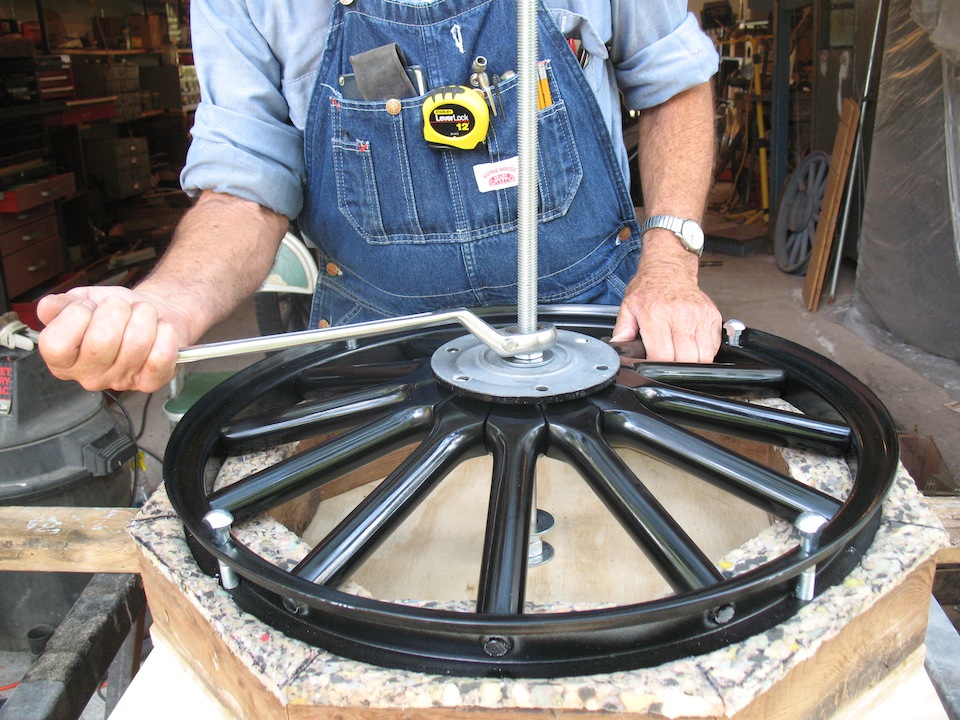 Several
years
ago I used the Regan press to assemble a pair of
rear wheels, and had no trouble. John did point out
one thing I was doing wrong in this picture. The
felloe should be free to center itself, so I should
not have bolted it to the press. Fortunately it was
well centered and the bolts were not a problem, but
since he mentioned that I don't use them.
|
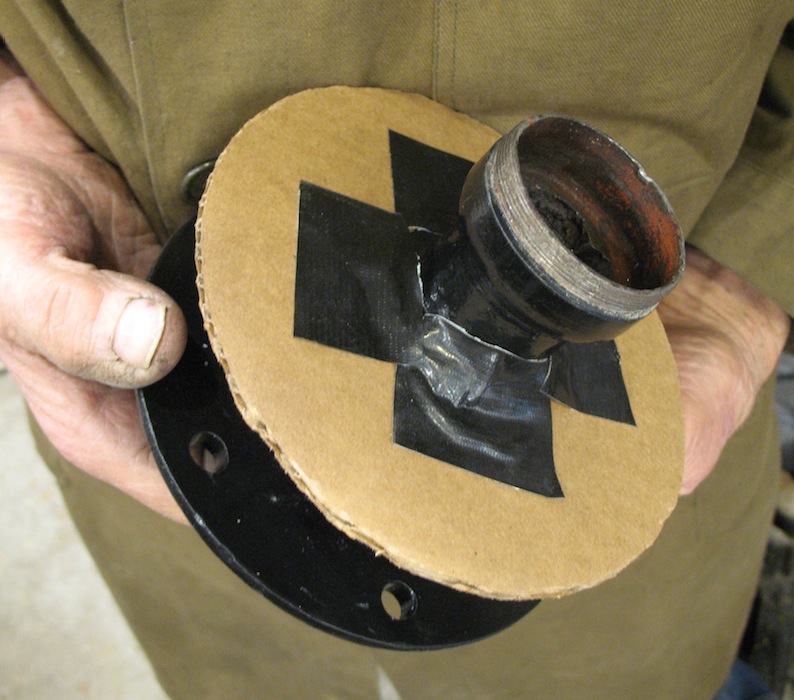 When it came to
assembling a front wheel I assumed it would be the
same as the rear wheels. But I soon found out
otherwise. One thing that is no different is the
cardboard collar I tape on the hub to hold up the
spokes as I arrange them in the press.
|
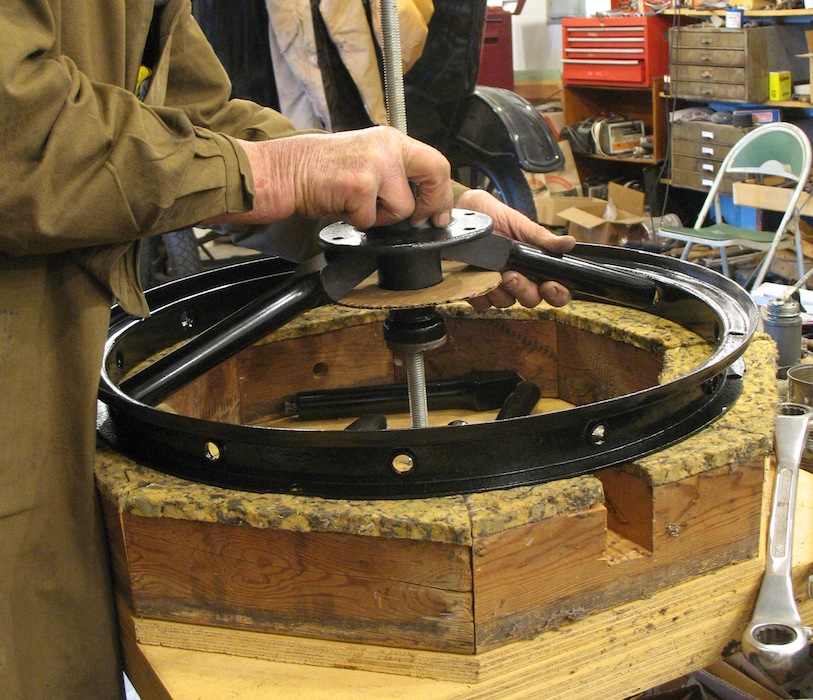 All
seemed
normal as I arranged the twelve spokes in the
felloe.
|
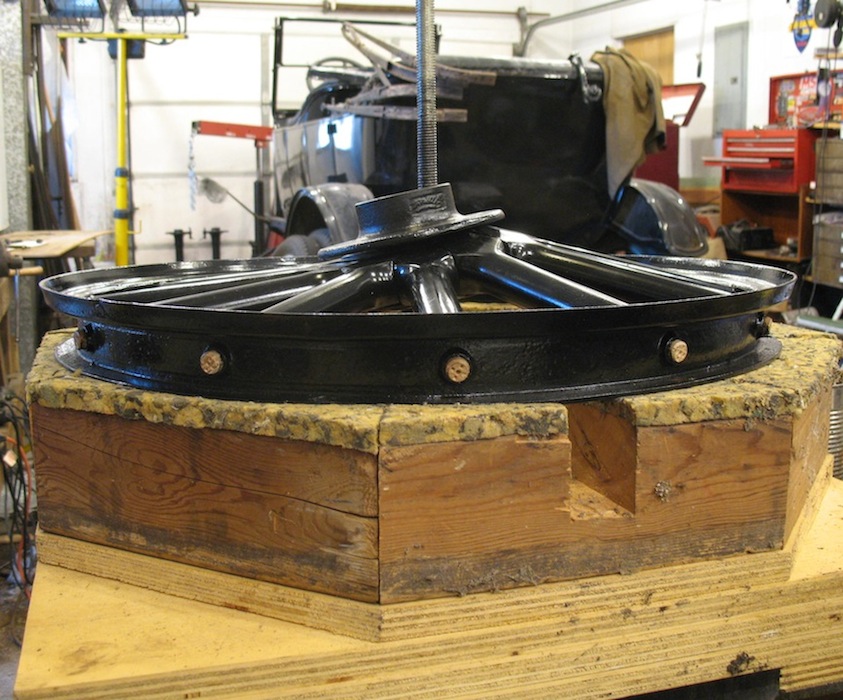 But
the more pressure I applied, the more cockeyed the
hub became. Obviously front wheels are not like
those rear wheels I did before.
|
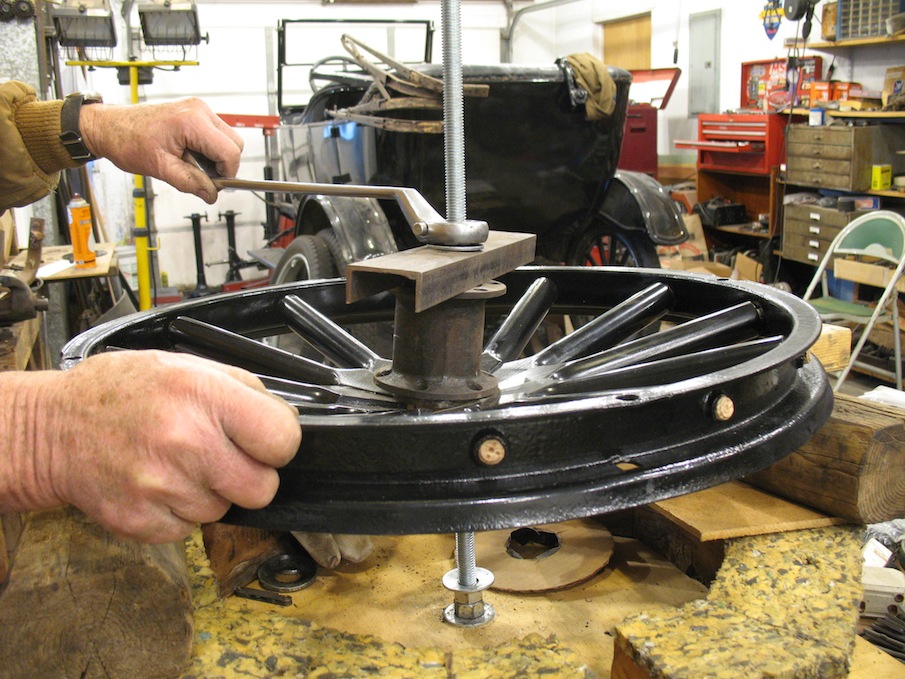 So
I had to turn the wheel over, press the spokes back
out, and start over.
|
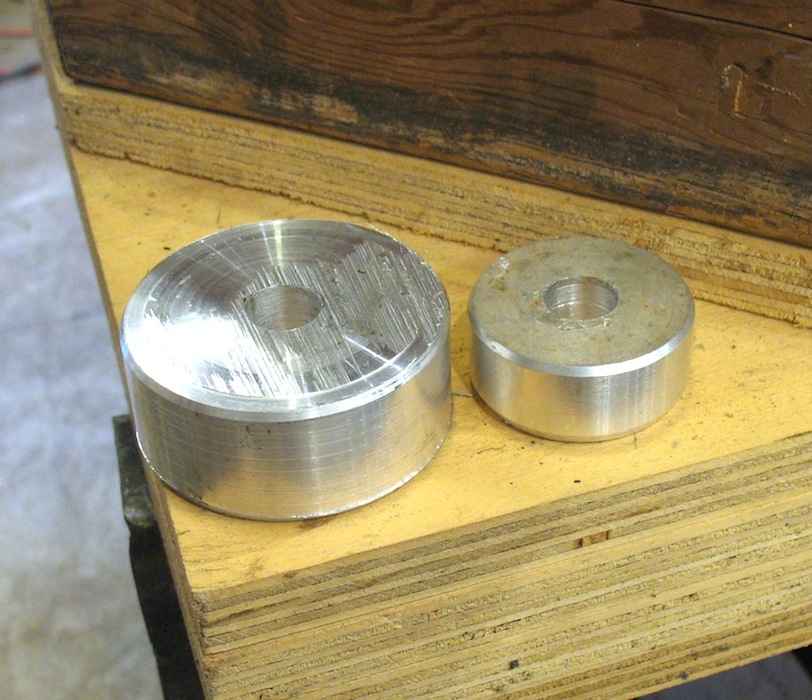 I
needed something to keep the hub straight. Round
wood blocks or washers of the right size might have
worked, but I made these.
|
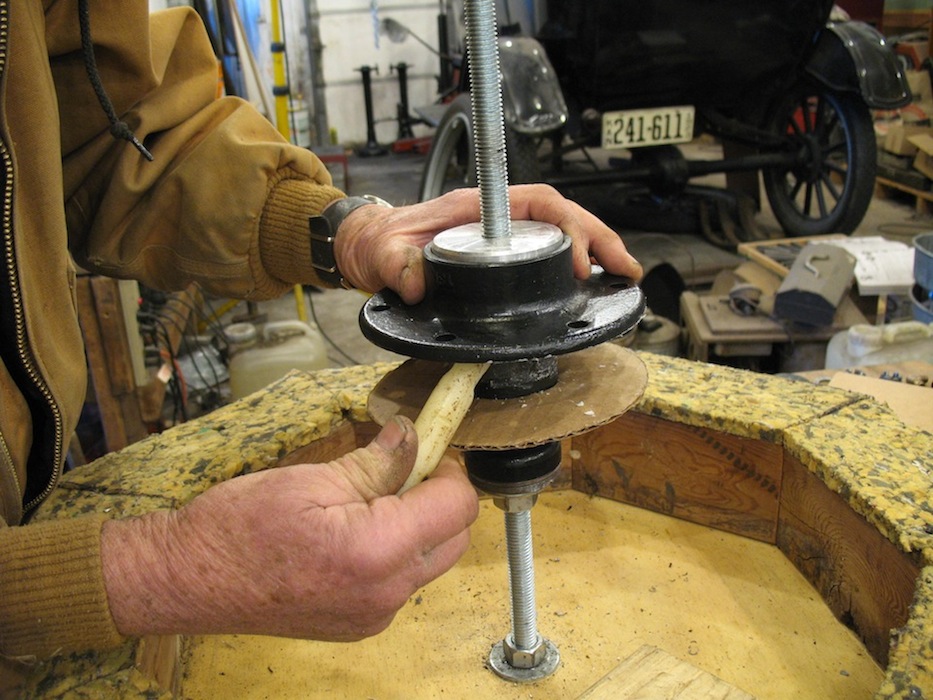 This
time
I lubricated the hub with candle wax the help the
spokes slide into place.
|
 I also waxed the spoke bottoms where they had to slide against the hub and each other. |
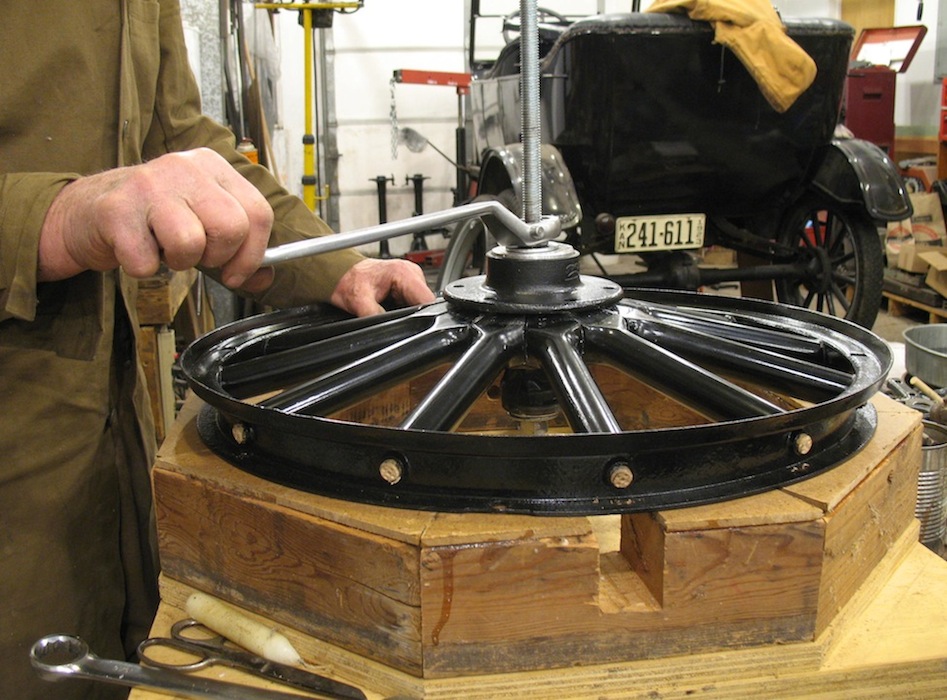 This
time
the hub went down straight.
|
 Another
difference
I discovered with the front wheel is that the hub
protrudes down into the press far enough that I had
to put the wheel up on 2x4 blocks to get the hub all
the way down.
|
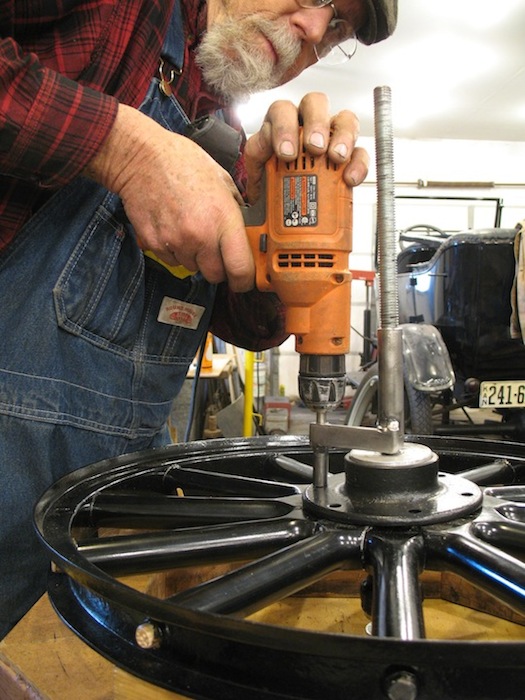 Next came drilling the
holes for the bolts.
|
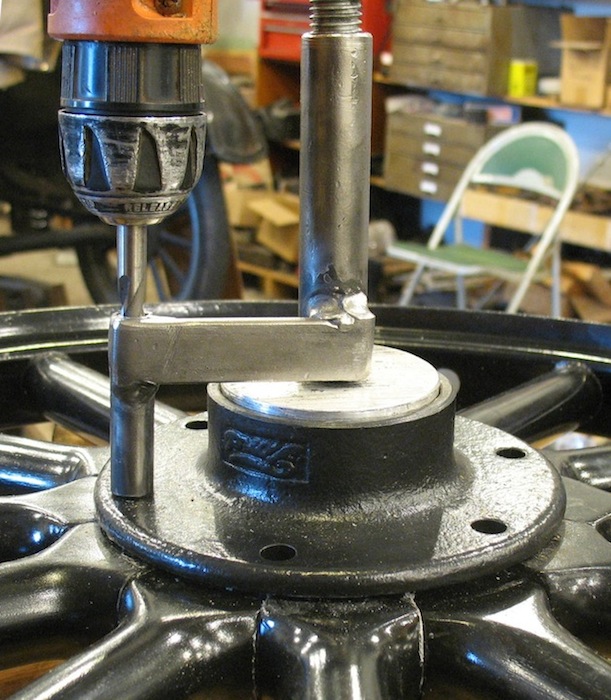 I
made this jig for drilling the holes straight.
Apiece of half inch pipe drilled out to 5/8" went
over the all thread. A piece of quarter inch pipe
drilled out to 23/64" went over the 23/64" drill bit
stuck in a hole. I clamped the cross piece at
both ends, made sure it was square, and welded the
pieces together. I use the jig to drill 23/64"
holes, then run a 3/8" bit through them to let the
bolts fit.
|
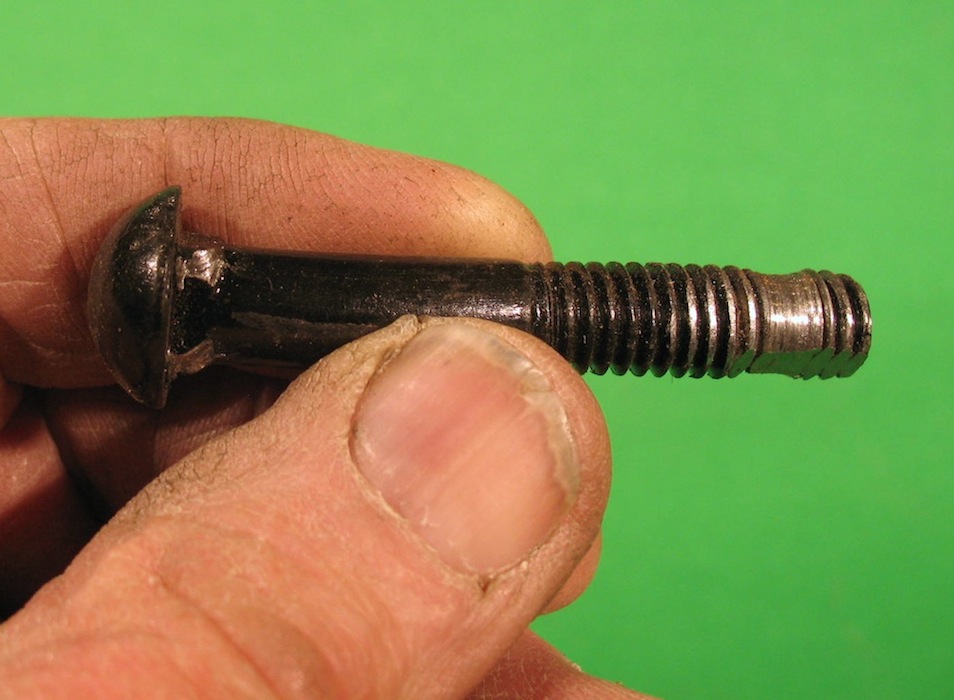 I
was careless in using wheel bolts of unknown origin.
Two of them suffered stripped threads like this, so
I replaced them with bolts from a known source: R.V.
Anderson. His products, including wheel bolts, were
correctly made and of high quality. Now that he is
gone I get hub bolts from one of the Model T parts
dealers and hope that they're made correctly.
|
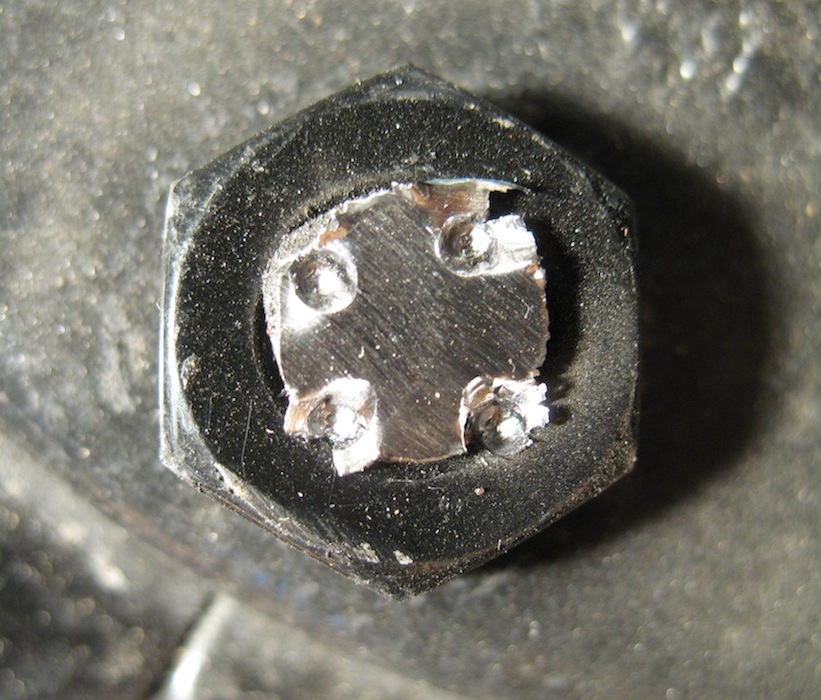 The
penultimate
step is to cut off the ends of the bolts about 1/16"
inch from the nuts and stake them with a punch so
they'll stay put.
|
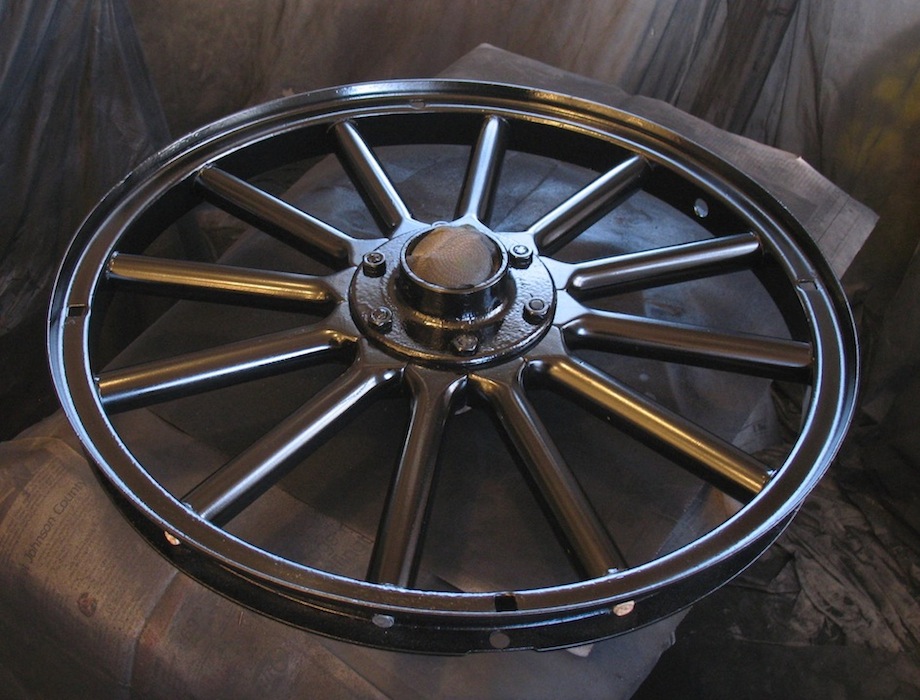 Finally a fresh coat of
paint makes it pretty.
|